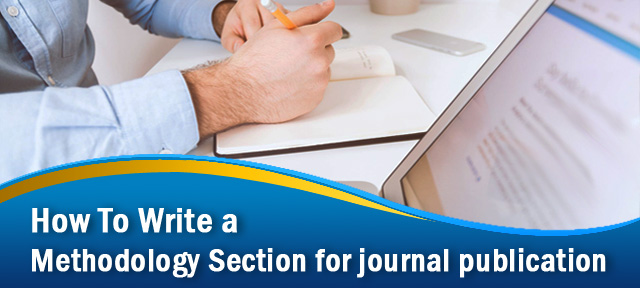Any researcher looking to publish an article in any journal for wider outreach is essentially seeking to share with the world the details of one’s research. For scientific studies, the research and data section is the most important focus for both authors and readers. A well-written methodology for an academic or scientific journal article must come across as straightforward and even simple, even though the process of writing is complex and extremely technical. Research procedures are often complicated, and presenting it succinctly in words is often a challenge for authors.

Here are some key tips on how to write the methodology section of a research article for journal publication:
Explain the methodological approach: The methodology section of your manuscript should start with essentially explaining why you did what you did. This consists of two parts: (a) Discussing the research methodology adopted, that links the theoretical concepts discussed in the earlier sections with these methods in a larger knowledge framework to establish why this particular methodology is best suited for your course of action; and (b) discussing the methodology itself, in terms of the various steps involved in conducting the research, starting from data collection, data processing, analysis, tools, and additional experimentations, etc.
Remember that established methods can be simply named or identified rather than need not be described in detail given the target audience would be well aware of it, but if you modify them in any way to fit your study, the modifications require extensive explanation and justification.
Explain your data: The key to any scientific research is the data. The methodology section has to explain in detail what type of data was used, how the data was collected, how it was processed, and ensure that the collection and processing of data followed established norms that ensure the data is not biased or polluted. For instance, you need to specify if you are using quantitative data of qualitative data, whether you collected data from secondary sources or primary sources. If you are collecting primary data via your own sampling/surveying, then you need to explain in detail the sampling/surveying process and ensure you followed proper protocols for such exercises.
Reporting your research activity: The most critical and interesting part of any research article is the actual research reporting. Journals accept or reject manuscripts on the basis of how interesting the actual research is. This in turn means that it needs to be presented in an interesting but thorough manner. The variables considered and manipulated should be explained and discussed. Independent variables should be distinguished from dependent ones, and the risks and precautions associated with confounding variables must be explained.
Some objectives to keep in mind: The manuscript you submit will only be accepted for publication if only the methodology is valid, reliable, and replicable. If the peer-reviewing committee is not satisfied on either ground, they may reject your research article. Therefore, take care to ensure your methodology section is written in a clear, direct, and concise manner.

